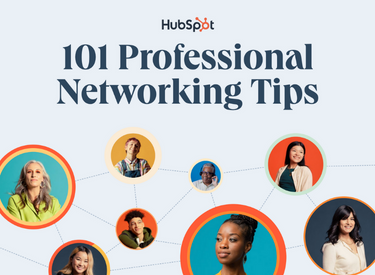Email is still the top communication channel for many professionals, and In a hybrid work environment, sending an effective introductory email is a critical skill for career growth.
Learn how to write a networking email that gets results by implementing the tips below.
Relationship-Building Email: What Not to Do
Hi John,
My name is Jane Smith, and I run Acme Organic Pet Food, a new company that produces and distributes right here in Cleveland. I see on LinkedIn you’re connected to several “big players” in the local pet product business community — in particular, Jim White over at Acme Pet SuperStore
Would you be willing to introduce me to Jim over email? I’d really appreciate it
Thanks in advance,
Jane
Problem 1: Jane assumes John and Jim are friendly.
What if John and Jim don’t know each other very well? And now Jane has asked for a favor that’s either awkward for John to complete or not possible.
Problem 2: Jane gives John a homework assignment.
John’s first encounter with Jane is an unpleasant one — he now has to find time to help a stranger and expend his own relationship capital in the process. What a hassle.
So what's the solution to Jane’s misguided email approach?
“Important” people like John and other business execs will often stop in their tracks and respond to an email if the subject line contains a powerful three-word phrase, "I need your advice."
The “ask for advice” strategy is non-threatening and a breath of fresh air. You don’t want people to do work on your behalf; you prefer to absorb their wisdom. We spend our lives amassing knowledge but rarely have an open invitation to share it with someone else. What a luxury to be asked!
When you sit quietly, listen to the person's advice, and come back with smart follow-up questions, you also build a relationship. Each new conversation strengthens your network, which in turn helps your business.
The Ultimate Networking Email Template
Here’s the outline of the email Jane should have written to John:
Here's what the email template looks like in practice:
Local pet food distributor who needs your advice
Hi John,
My name is Jane Smith, and I run Acme Organic Pet Food, a new company that produces and distributes right here in Cleveland. I am relatively new to the pet product business and still learning my way as I grow Acme Organic
I know you have a lot of experience in the space, and it would be great to sit with you and learn about the industry as well as the “do’s” and “don’ts” as I get started
Please let me know if you’re free over the next couple of weeks for coffee. I’d appreciate the chance to ask questions
Thanks again,
Jane
Success 1: Jane asks for advice
Note how Jane asks for advice to build trust with John and, over time, make him part of her network. As she grows her pet food business, she will need mentors and allies. Most people want to help each other. Jane knows that and is using it to create a genuine connection with John.
Advice is also an easier close than asking for a connection. Make your initial request one that's easy and even flattering for the recipient to respond to.
Success 2: Jane builds trust
And it’s possible that, after the coffee chat, John will agree to connect her to Jim White — the owner of Acme Pet SuperStore that she so wants to meet. But that’s because she’s created a level of trust and built a relationship the right way.
It would be tough for most of us to introduce a connection to someone we've never met. By building trust first, Jane increases her chances of success and gives a better first impression.
Networking Email Subject Lines
Here are more subject lines for this type of email that you can use or adapt for your unique situation:
General networking subject lines
- "Friend of [mutual acquaintance] who needs your advice"
- "Fellow [your industry] professional who needs your advice"
- "Could you help?"
- "I'm a little lost"
- "[Mutual acquaintance] recommended we speak"
College alumni subject lines
- "Fellow [your college] grad who needs your advice"
- "[Mascot name] in need of advice"
- "Time for a fellow [college name] grad?"
- "Did you see last weekend's [school name] game?"
- "Fellow [alumni name] out in the wilderness."
Industry leader subject lines
- "Big fan of your work who needs your advice"
- "Inspired fan needs your advice"
- "Advice for a hustler like you?"
- "5 minutes of your time could make my career."
- "Buy you a coffee?"
Interoffice subject lines
- "New employee who needs your advice"
- "I'm new here ... and a little lost"
- "Question from the new hire"
- "[Name] recommended I connect with you"
- "Nice to meet you"
How to Write a Networking Email to a Stranger
If you're writing a networking email to a stranger, try to work at least a few of the following five points into your message:
1. Tell them something about their work you admire.
Whether you liked a recent article they wrote or admired a comment they left on a hot-button LinkedIn post, pointing out something you love about their work will get you far. Just make sure it's genuine, well-researched, and professional.
Your good intentions will be worth nothing if you lead with a generic, "I saw your article last week in the Atlantic." Instead, get specific about what you liked. A better approach would be, "I read your Atlantic article about the rise of homemade dog food last week. I especially liked your point about how homemade meals can sometimes be lacking in the vitamins and minerals pets need in their food."
2. Call out your similarities.
The classic example of this is, "Hey, I see you went to X College. So did I! Don't you miss sunny afternoons on Library Lawn?" But you're not limited to college talk. If they have similar professional interests, tweet about a hobby you share, or are members of similar LinkedIn groups, use that as a jumping-off point in your email.
3. Tell them how you can help.
If you're writing a networking email to a stranger, they have no real reason to help you. Consider how you might be able to assist them in return. Can you write a blog post for their website? Is there someone you could connect them with in return? Make this a mutually beneficial exchange.
4. Ask them for help or advice.
As we've done in the examples above, ask your recipient for help. A recent Harvard Business Review article says, "The key to a successful request for help is to shift the focus to these benefits. You want people to feel that they would be helping because they want to, not because they must, and that they're in control of the decision.
The article continues to explain that means avoiding language like, "May I ask you a favor," which tends to make people feel trapped into helping. It also advises avoiding apologizing with phrases like, "I feel terrible for asking this." Instead, work language like, "Can we work together to figure this out?" which is scientifically proven to promote the exchange of information.
5. Always start with an easy ask.
Never ask for the connection, favor, or meeting first. This can come across as too pushy or forward. Test the waters with a request for advice, information, or other knowledge sharing. This builds trust and relationships, and it increases your chances of success when you do ask them to introduce you to that connection you've been eyeing.
Here's an easy template you can use putting these tips into practice:
Hi Sage,
My name is Quincy Davis, and I manage partnerships at Mix Furniture Co. I read your feature in the LA Times last week and appreciated your valuable insight on future design trends.
I'm building our partnerships list for the upcoming year and would love to discuss paid opportunities for you to share your expertise with our audience.
Would you have time to hop on a call in the coming weeks and talk about your upcoming plans and future collaborations?
Thank you, and I look forward to hearing from you,
Quincy
How to Write a Networking Email to Someone You Know
If you're writing a networking email to someone you already know, the hardest part is done. Instead, shift your tone and content to making sure they feel appreciated and collaborated instead of used and discarded. Here are a few things to keep in mind:
1. Ask about them ...
... and mean it. Don't just start your email with a generic, "How have you been?" Dig deep and ask about their kids by name or how that obscure hobby they're interested in is going. These kinds of questions are also more enticing for your reader to answer. "How are you doing?" is easy to ignore and lazy.
And if you've just met at a conference or networking event, it's always good to remind them who you are and ask how the rest of their conference or event was.
2. Provide a personal update.
Make your email even more personable by offering a sentence on how you're doing. Something like, "I'm doing well. Just got back into the office after a family trip to Disneyland, so I'm getting caught up and enjoying not having to stand in line for 45 minutes to use the copy machine!" This is personal, conversational, and a little funny. It's the perfect way to put your reader at ease as if they're talking to a friend — even if you've only met once or twice.
3. Respectfully present your ask.
Once you've politely opened your message, get to the point. There's less reason to sugarcoat your ask since you have a relationship with this person already. A simple, "The reason I'm reaching out today is ..." will do the trick.
Here's what these elements look like in an email:
Hi Sam,
My name is Nova, and we met briefly at INBOUND last week. I was really impressed with your session, and I hope you enjoyed the rest of the event.
In my role at XYZ Studios, I'm looking to bring in experts who can lead upcoming sessions for our employee development group. I immediately thought of your presentation at INBOUND and wanted to gauge your interest in participating in this paid opportunity.
Do you have time to hop on a call this week and discuss more details?
Thank you,
Nova
Good luck with your next outreach email and remember: The best way to build a relationship is to listen, learn, and ask questions.
Editor's note: This post was originally published in December 2015 and has been updated for comprehensiveness.
Networking

.jpg)
.png)






![The Complete Guide to Business Networking [+8 Key Tips You Should Leverage]](https://53.fs1.hubspotusercontent-na1.net/hubfs/53/business-networking-fi%20(1).jpg)
![Why Networking is Important [+ How to Get it Right]](https://53.fs1.hubspotusercontent-na1.net/hubfs/53/why-networking-is-important.jpg)
![Making the Most of Virtual Networking [+How to Get it Right]](https://53.fs1.hubspotusercontent-na1.net/hubfs/53/virtual-networking.jpg)

.jpg)


